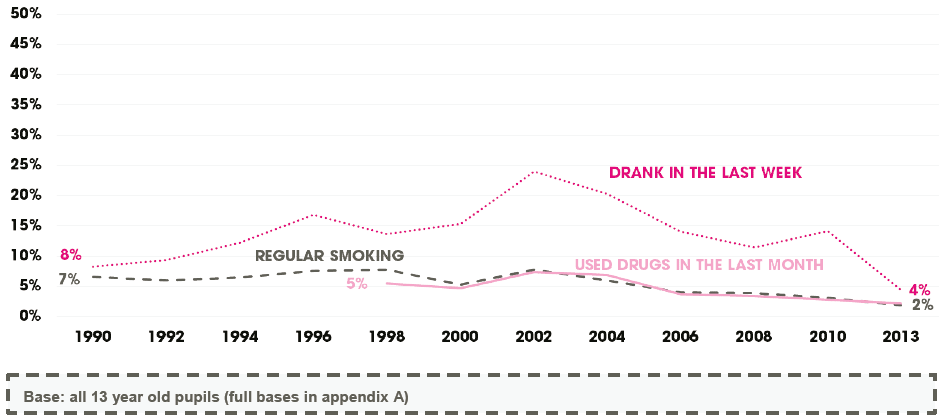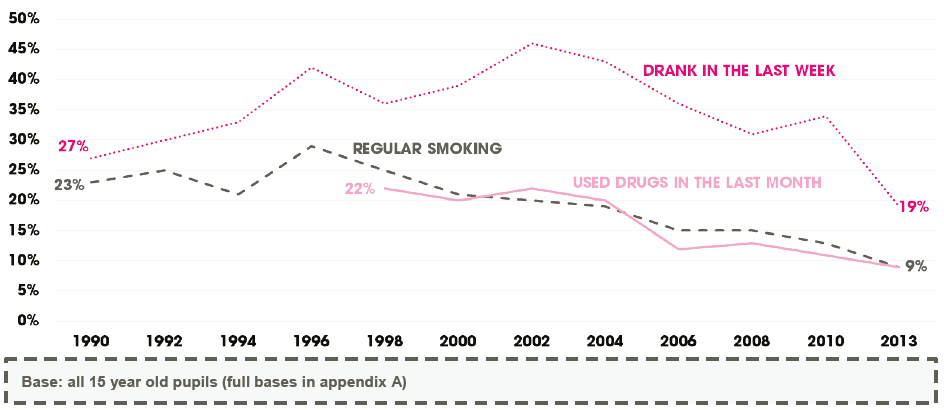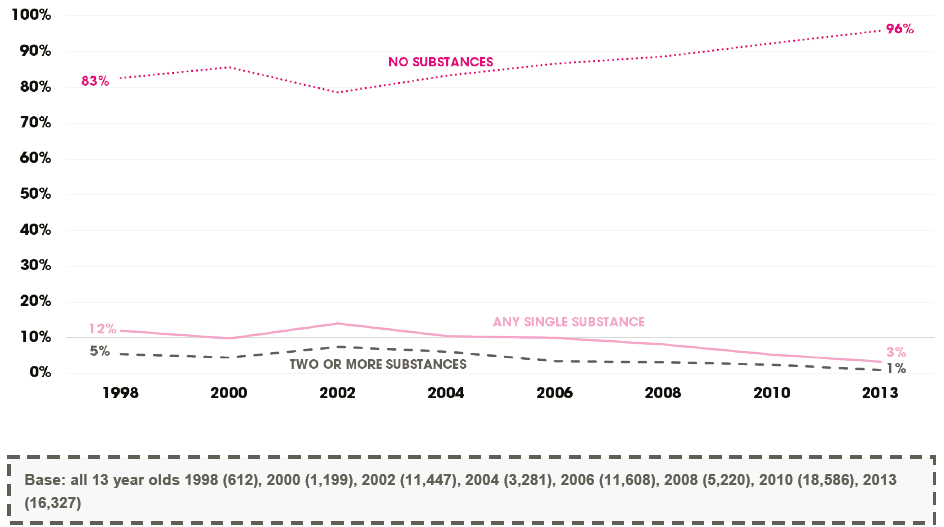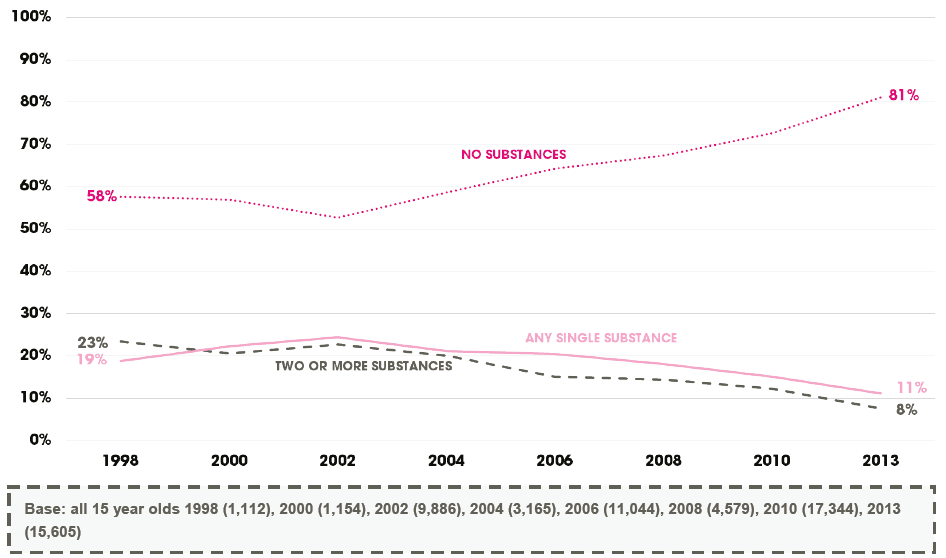Multiple Substance Use Among Adolescents in Scotland: Profile and Trends
This report examines the prevalence of regular use of 2 or more substances among adolescents in Scotland, and key factors associated with multiple substance use.
This document is part of a collection
2 Changes in multiple substance use over time
Key Findings
- Regular use of individual substances (tobacco, alcohol and drugs) has fallen over time and is now at an all-time low.
- These findings are consistent with other surveys such as Health Behaviours in Scotland-Aged Children (1) (see reference list) and Smoking, Drinking and Drug Use Among Young People in England (2).
- Multiple substance use (recent use of two or more substances) has also fallen over time. This was the case for both age groups and sexes.
Wider context of changes in substance use over time
2.1 This report explores trends in multiple substance use, the profile of those using multiple substances in 2013, and the factors which best predict the use of multiple substances.
2.2 Before looking at multiple substance use in more detail, it is important to put the findings in the context of the wider substance use landscape. The use of tobacco, alcohol and drugs has been steadily decreasing among young people in Scotland for a number of years. This reduction in substance use can be seen not only in the SALSUS results, but also in the most recent Health Behaviours in School-Aged Children (HBSC) figures (1) and reflects a similar pattern in data in England in the 2013 Smoking, Drinking and Drug Use Among Young People in England Survey (HCIS, 2014) (2).
2.3 The proportion of regular smokers[2] fluctuated for a number of years before reaching a peak in 1996. Since then, regular smoking has been steadily declining among both age groups. Regular smoking is now at the lowest recorded level since the data has been collected (Figures 2.1 and 2.2).
Figure 2.1: Trends in regular substance use among 13 year olds between 1990 and 2013

2.4 Among both age groups, drinking in the last week increased steadily until 1996. After a small drop in the figures in 1998, drinking in the last week began to increase again until it reached a high point in 2002. Since 2002, recent alcohol use has decreased to the lowest levels recorded in 2013 (Figures 2.1 and 2.2).
Figure 2.2: Trends in regular substance use among 15 year olds between 1990 and 2013

2.5 Drug use in the last month has been falling since it was first included in the survey in 1998. This was the case for both age groups. As with regular smoking and drinking, regular drug use is now at its lowest ever levels (Figure 2.1 and 2.2).
Multiple substance use trends by age
2.6 As with the main smoking, drinking and drug use trends, multiple substance use[3] has decreased in recent years. This again reflects findings from the Smoking, Drinking and Drug Use Among Young People in England Survey (2).
2.7 Among both age groups, there was a small increase in the use of two or more substances, until reaching a peak in 2002. Since that wave of the survey, the prevalence of multiple substance use has decreased until reaching a low in 2013 (Figures 2.3 and 2.4).
Figure 2.3: Multiple substance use over time among 13 year olds[4]

Figure 2.4: Multiple substance use over time among 15 year olds

2.8 As with the main substance use trends, multiple substance use was higher among 15 year olds than 13 year olds. As the number of 13 year olds using two or more substances was very low (1%), the small sample sizes would not allow meaningful analysis. The remainder of the report focuses on the profile of multiple substance users in S4.
2.9 In terms of gender, the pattern of multiple substance use over time was very similar for boys and girls. Among boys, the use of two or more substances had decreased from 17% in 1998, to a low of 5% in 2013 and, among girls, from 17% in 1998, to 4% in 2013.
Contact
Email: Emma McCallum
There is a problem
Thanks for your feedback